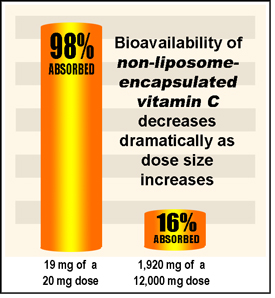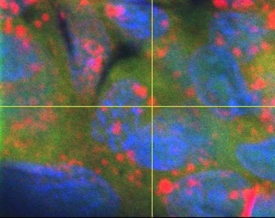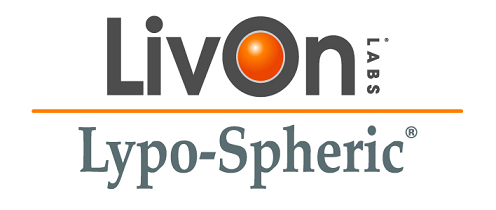The Importance of True Bioavailability
Bioavailability starts when a nutrient passes from the digestive system into the bloodstream. Absorption into the bloodstream, however, is only a partial measure of the body’s ability to benefit from certain nutrients.
True bioavailability is the degree to which a nutrient becomes available to the target molecular site after administration. For nutrients like vitamin C and glutathione, the target molecular site is typically inside the cell, and not just inside the bloodstream.
How do Nutrients Enter the Bloodstream?
The process of uptake from the digestive system varies greatly from nutrient to nutrient. Vitamin C is absorbed almost exclusively in the small intestine and requires the presence of transport proteins. For vitamin C, these transport proteins are called sodium-dependent vitamin C co-transporters (SVCTs). A lack of these proteins produces a corresponding lack of vitamin C uptake. Published research confirms that SVCTs (transport proteins) tightly regulate vitamin C absorption.
In one study with non-liposome-encapsulated vitamin C, 19 mg of a 20 mg oral dose entered the bloodstream. As the dose size increased beyond 30 mg, the blood level of vitamin C decreased drastically. They reported that a dose of 12,000 mg produced a maximum absorption of 16% into the bloodstream – That’s less than 2,000 mg!

Blood levels of non-liposomal Vitamin C decrease dramatically with dose size. Gropper SS, Smith JL, Groff JL, (2009), Advanced Nutrition and Human Metabolism, West Publishing Co. p 313.

Cellular uptake is required to obtain maximum benefit from certain nutrients. This fluorescent microscope image is from a study with LivOn’s “Smart” lyposomal Nano-spheres®, which shows liposomes can cross cellular membranes of cultured liver cells. The bright magenta spots are fluorescent-dye-tagged liposomes inside the liver cells.
How do Liposomes Maximize Bioavailability?
Once vitamin C enters the bloodstream, an active transport process is needed for the nutrient to move across any cellular membrane. This process can be just as restrictive as the one that initially limited the nutrient’s entrance into the bloodstream. Much of the vitamin C that is not actively transported into the cells will be filtered out by the kidneys and passed in the urine.
Liposome encapsulated nutrients can bypass the absorption barriers and cellular uptake restrictions because liposomes do not rely on SVCTs or any other carrier transport system. Instead, due to their size and composition, they can be absorbed passively through the intestinal wall and through cellular membranes. As a result, liposomal nutrients achieve maximum bioavailability in the bloodstream and cells.




